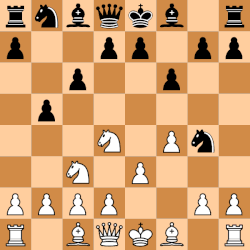Atomic Anxiety
Today's Special: Bottomless Cortisol
I’m always stressed. More than average, I’d say.
If there’s anything I’m good at it’s finding something to worry about. A thing will bother me until I fix it or rationalize it away. After a (very) brief respite another concern will appear and take up the vacancy. Great, I got my taxes filed. Sigh. But damn… I feel like the entire kitchen is due for a reorganization. Time to worry about that for a while.
Naturally, I’d like not to be stressed. First of all it’s deleterious to one’s health. It’s also inherently unpleasant. I try to avoid it and, kindly, my partner makes a lot of efforts to help me reduce my stress levels as well. The upshot is that (assuming no meltdown) I tend to get a fair amount of stuff done.
One way I’ve made sense of this: anxiety is like a nuclear power plant. It’s marvelous at providing a lot of baseline power. The trade-off is that you can’t easily turn it off and on based on when you need it.

My old boss used to joke that all of her best employees and colleagues were anxious types. She wanted to hire more of them, but the screening questions wouldn’t make it past Human Resources. Instead, she just asked candidates if they were into long distance running.
Lots of people joke that they run from their demons. Not wrong. It’s also true that plenty of productive people run on demons.
High baseline anxiety is what it is. Frankly, it’s more interesting to look outward when this sort of thing confronts you, than to try and resolve it internally. Again, kindly, my partner has asked me if I could reduce my stress significantly. I think I could, but this is where the nuclear metaphor really shines.
While you can stop the reaction at the core of a reactor, it’s a risky endeavor. Heat from the decay needs to be released. It’s an arduous, dangerous procedure. Just as would be the mixology behind the perfect morning cocktail of beta blockers and alcohol that I might need to reduce my baseline.1
Exercise is a really good outlet. In large part because it’s free and salutogenic (it creates health – the opposite of pathogenic). Furthermore, it represents a pattern of habits that can be generalized to other pursuits. I’ve met endurance athletes that run on demons (all of them), but also project managers, analysts, writers, teachers, parents, engineers, coaches, executives…
They’ve hooked up their baseline anxiety to a sufficiently diversified, rich, and aligned grid of outlets. It’s an outward management strategy where the best case scenario is not systemic anxiety elimination. Rather, it’s to synchronize the natural rhythm of your anxiety with a composition of problems worth managing.
“…the continuous need for willpower may be the sign of a badly-engineered life.” - Cate Hall, Maybe you’re not actually trying2
Like the Federal Reserve manages interest rates so that the economy runs not too hot nor too cold, you want to set up your grid so that your atomic anxiety reactor neither fails to keep up nor melts down because of an abrupt arrest in operations.
Of course acute stress is bad. Horrors, like surviving a bear attack, can break people. But your subjection to those is often outside of your circle of control.
Here, I mean your internal battery of stress. The one that will melt you down into a paralyzed, depressed couch potato if you don’t apply it. The one nature evolved into you as an engine to propel you through the demands of a dynamic, hazard-filled environment.
Just like other traits – charisma, openness, courage, etc. – surpluses will find an outlet themselves. As much as it’s a counseling problem, it’s also a matter of engineering, supply chain management, or protocolization. Occasionally you’ll have an opportunity to adjust the supply of problems that you apply your anxiety to. I highly recommend you err on the side of choosing too many.
One concrete example: just because Acme Co. attracts talented employees with a fat baseline of motivation, doesn’t mean those employees will get a lot done – nor will they necessarily grow. Organizations must engineer a work environment that provides a steady flow of problems, resources, and responsibility to effective employees. Businesses must select and design protocols that enable people to synchronize themselves with the marathon-like demands of a worthwhile project, without relying on willpower alone. The objective is not ease but traction.
A protocol-based organizational map could help a business meet this objective.
The Eternal Sunshine of the Paradoxical Mind
I saw this GIF while doomscrolling on Friday afternoon:
We all have a little Sith in us. There are things we refuse to compromise on. I’ve seen bureaucratic blood feuds derail what would otherwise be pure engineering debates. That’s the unfortunate reality for most problems. Unless you have a truly game-changing piece of technology, it’s necessary to juggle both historical narratives and technical problems.
Every other Monday, I host a study group on trade-offs, tensions, incentives, and protocol design under the umbrella idea of a Spannungsfeld.
Our next call is tomorrow, July 14th at 11 a.m. Eastern Daylight Time. The topic is conflict. You can join the call, or keep up on the group’s progress and musings via the Summer of Protocols Discord.
I have an ambitious goal for this study group: to publish an open, collaborative book that presents a new approach to management and organization based on protocols. We’ll draw on real examples and retrofit the theory onto existing businesses and classic case studies. Here’s an outline of the project.
Atomic Chess
One fun fact to close this article out. There’s a variant of chess called Atomic Chess where captured pieces explode, removing adjacent pieces from the board.
A neat feature of this variant’s ruleset is that you can pursue a draw by moving your king next to your opponent’s king. Since capturing the one king would blow up the other, there’s a sort of hot security. Si vis pacem, para bellum.
This is not medical advice.
Big fan of this Substack’s tagline: “all models are wrong, but some are useful”. I added to this original quote once… “Give a man a model and he’ll be wrong for a day. Teach a man to model, and he’ll always be wrong, but sometimes useful.”





A similar realization led me to finally ditch GTD a decade ago. I realized the ideal amount of chronic anxiety is not zero. The ideal inbox is not inbox zero. An anxiety prone, chronically stressed temperament is not necessarily pathological (contra Sapolsky’s zebra-ulcer thesis). It’s just an adaptation for a different environment.
If I wanted to milk this for status points, I’d say “I don’t have an anxious temperament; I’m neurodivergent and it’s actually an adaptive superpower in times of ”accelerating change”
What does a protocolized organizational map look like? One of the key items for Q3 in our process matters work is for teams to share out what they do. I’m in Europe though will share the protocol there when I’m stateside if you’re curious.
Also FWIW you’ve always presented as very cool calm and collected when we’ve interacted good sir.